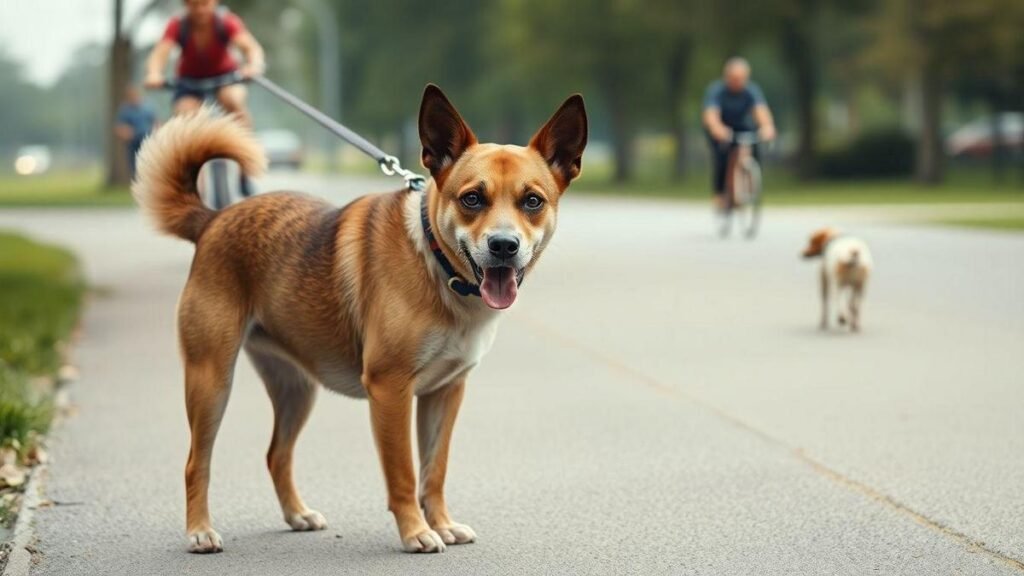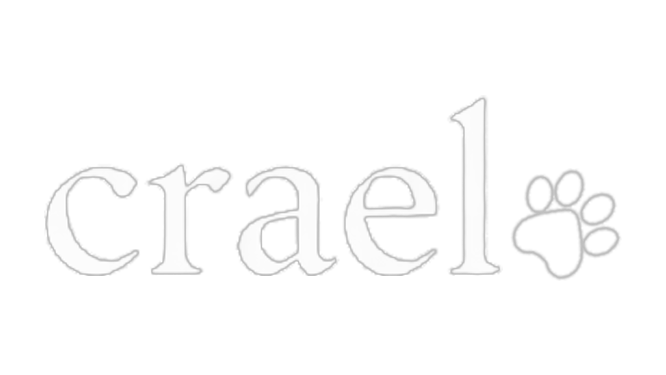Sinais de estresse em cães e como aliviar o problema durante passeios
I watch for panting, drooling, shaking, a tucked tail, and small tells like lip licking, yawning, or whining on walks. I do quick checks and note patterns so I can calm my dog with short pauses, treats, and distance changes. I adjust the leash or harness, pick quieter routes and times, and keep a simple pre-walk checklist to prevent triggers. If signs persist or worsen, I write clear notes to share with my vet or trainer. I want my dog to feel safe and relaxed every walk.
Key Takeaway
- I notice my dog pulling back or trying to hide.
- I hear panting, whining, or trembling.
- I see yawning, lip licking, or drooling.
- I feel my dog freeze, refuse to walk, or pace.
- I spot a tucked tail, ears back, or avoiding eye contact.
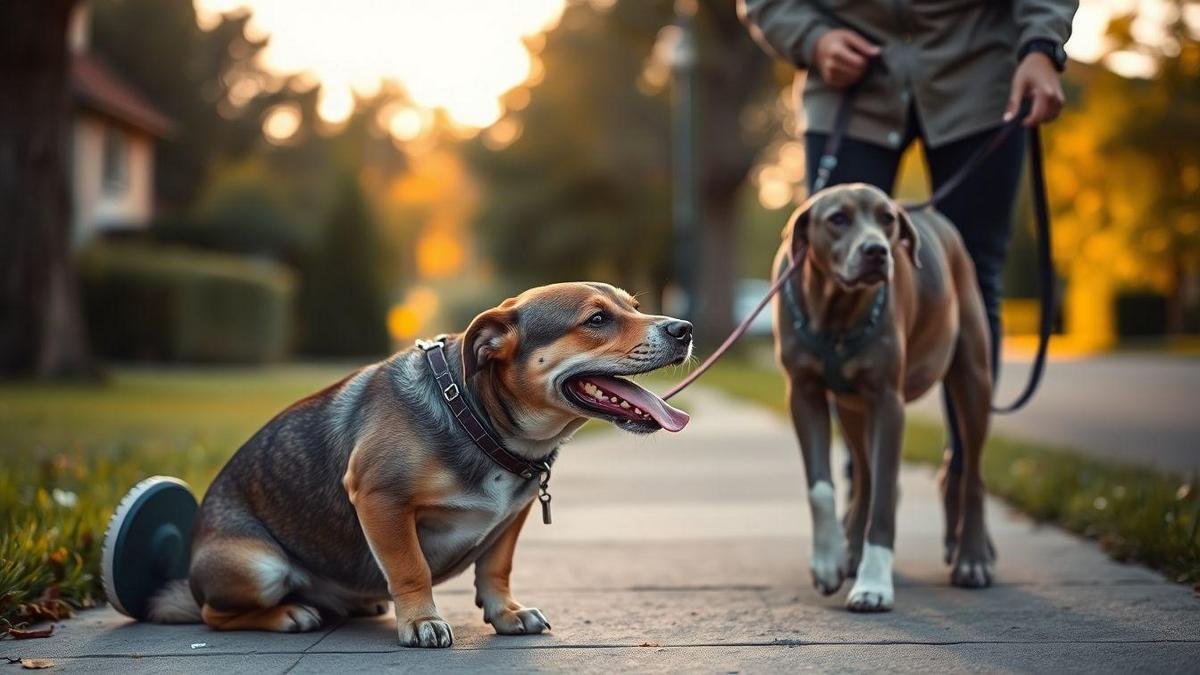
How I spot physical signs like panting and drooling on walks
Panting and drooling as clear stress signals
When I see heavy panting that’s faster than usual, or panting after light walking, I treat it as a stress flag. I check tongue and gums (pale or sticky can mean heat or anxiety). Sudden extra drooling can mean stress, nausea, or fear. I note the environment—loud trucks, crowds, or other dogs—and respond by slowing, moving to shade, offering water, and speaking in a calm voice. For chronic noise sensitivity I also use strategies from guides on keeping pets calm during loud events and work on controlled exposure.
| Sign seen | What it may mean | What I do |
|---|---|---|
| Fast, shallow panting | Heat or anxiety | Move to shade, give water, slow pace |
| Panting after short walk | Stress | Pause, calm praise, change route |
| Sudden drooling | Fear or nausea | Remove trigger, monitor closely |
Shaking, trembling, or a tucked tail
If I spot shaking or trembling, I check: cold, fear, or pain? A tucked tail low head hunched back = fear. Look for wide eyes, lip licking, avoiding eye contact. Sudden severe shaking → stop and check for injury; if medical causes are possible I contact my vet. Fear-based shaking → give space and pick a quieter path.
| Body clue | Likely cause | Immediate step |
|---|---|---|
| Tail tucked, low body | Fear | Move away from trigger, give space |
| Whole-body tremble, whining | Pain or extreme fear | Stop, check for injury, call vet if severe |
| Shiver in cold | Temperature | Add coat or shorten walk |
Quick physical checks before & during a walk
I do a few fast checks so I can act quickly:
- Touch paws for cuts or hot-pavement burns (part of my daily touch-check routine).
- Feel the collar/harness for tightness or rubbing.
- Check gums briefly for color—pale gums worry me.
- Lift the lip to scan for mouth sores or foreign objects.
- Watch breathing: slow and even is good; fast and noisy is not.
| Check | How | Why it matters |
|---|---|---|
| Paws | Press pads gently, look between toes | Cuts & heat damage are common |
| Collar fit | Two-finger rule | Too tight causes pain & stress |
| Gums | Quick glance under lip | Shows circulation & hydration |
| Breathing | Watch chest rise | Shows stress or heat issues |
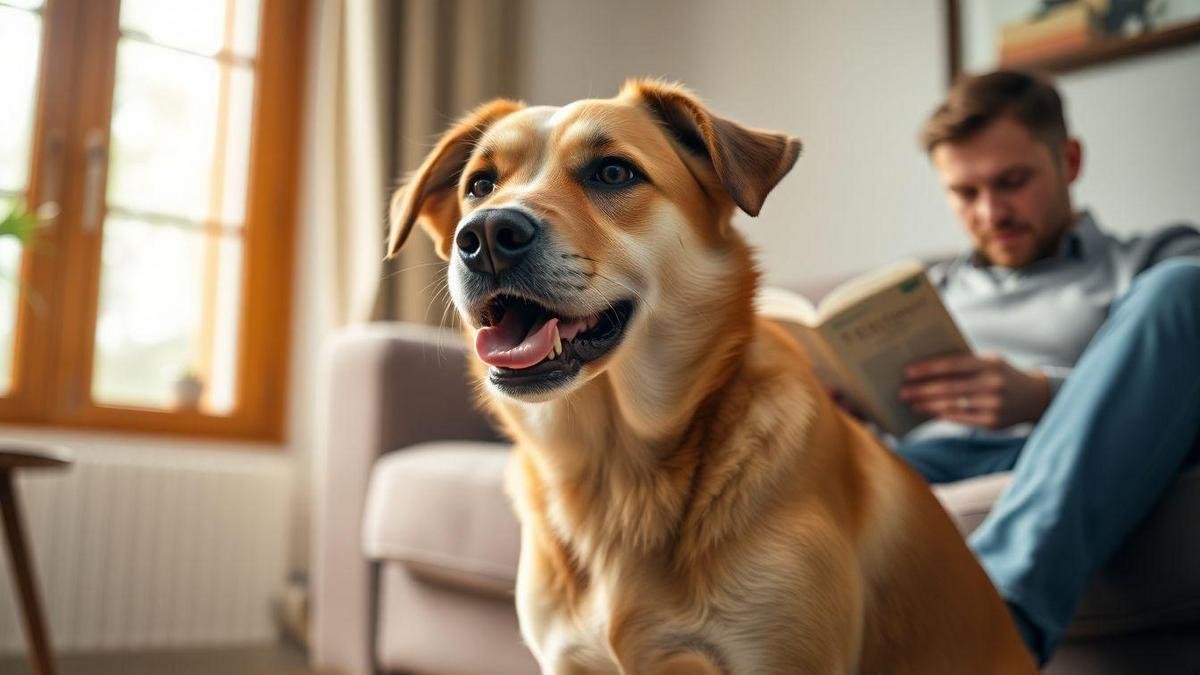
Reading behavior: lip licking, yawning, whining, pacing
Lip licking and yawning as subtle stress signs
I watch for lip licking and yawning—they’re quiet stress signals. When my dog licks lips near other dogs or loud streets, or yawns when overwhelmed, I slow down, give space, and use a soft voice. Small adjustments often calm him quickly. These behaviors are similar to indoor overstimulation cues covered in resources on preventing overstimulation.
| Sign | What I notice | Quick action |
|---|---|---|
| Lip licking | Repeated tongue on lips, no food | Pause, back away, offer space |
| Yawning | Big yawn while alert | Slow pace, reduce stimulation |
| Tense face | Tight mouth, pulled-back ears | Speak softly, avoid direct approach |
Whining, pacing, restlessness
I record whining or pacing. Whining on leash often means stress or wanting to escape. Pacing shows rising tension. I identify triggers—bike, dog, noise, tight gear—and remove them when possible. If not, I shorten the walk and try again later. Working on social skills can help; resources on socializing pets are useful for gradual exposure.
Examples:
- Stroller spooked him → cross the street, sniff tree → calm in two minutes.
- Busy sidewalk → turn back to a quieter path → relaxation.
| Trigger | Recorded sign | Response |
|---|---|---|
| Crowds or bikes | Whining, pacing | Change route, keep distance |
| Loud noises | Restlessness | Stand still, soothe, leave if needed |
| Tight gear | Repeated whine | Check collar/harness, adjust fit |
Simple behavior notes I keep
Short notes (voice memo or checklist) track:
- When (time)
- Where (location)
- Trigger (other dogs, cars)
- Sign (lip licking, yawning, whining)
- Intensity (mild / moderate / strong)
- Action (moved away, changed gear)
- Recovery (how long to calm)
A quick template helps spot patterns and plan desensitization when needed—pair with stepwise plans like those in teaching settle on command to give your dog reliable coping tools.
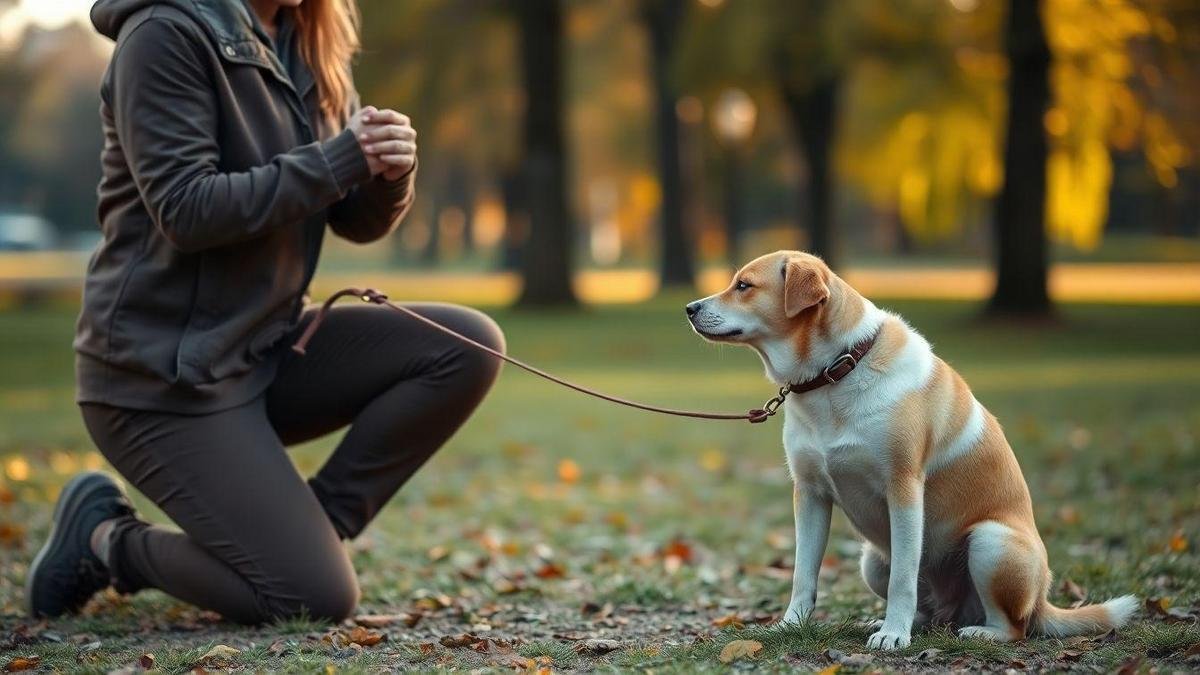
Leash-related stress behaviors and fixes
Common leash-related behaviors I watch for
I read body language for tension or fear and act fast.
| Behavior | What I see | Likely cause | What I do |
|---|---|---|---|
| Freezing | Stops, stiff legs | Overwhelm/fear | Back away, give space, quiet praise |
| Pulling | Fast lunges | Excitement or escape | Stop, change direction, reward calm |
| Lunging/Barking | Forward thrust, bark | Reactivity/anxiety | Create distance, use treats, short focus games |
| Tail tucked / low body | Crouched posture | Fear/avoidance | Slow pace, avoid trigger, treat exposure |
| Excessive sniffing | Stops often | Avoidance coping | Short breaks, then cue to move forward |
How harness & leash choice reduce anxiety
A good fit = less stress. Test gear slowly and watch for relaxation. For handling leash manners and gear choices, combine fit checks with basic training from obedience resources.
| Gear type | Stress effect | When I use it |
|---|---|---|
| Flat collar | Neck pressure, cough risk | ID only; not for pulling dogs |
| Back-clip harness | Comfortable, can allow pulling | For calm dogs |
| Front-clip harness | Reduces forward pulling | For pullers or anxious lungers |
| Head collar | Strong control, needs training | Brief use with training |
Signs of wrong fit: rubbing, chafing, pawing, more pulling. If seen → stop and change gear.
Steps to switch gear calmly
- Let dog sniff new gear with a soft voice.
- Place treats near gear; reward calm interest.
- Fit gear while dog sits relaxed; adjust straps gradually.
- Ensure two fingers fit under straps; check for rubbing.
- Do short yard practice walks; reward calm steps.
- Stop if stress shows; calm before trying again.
These calm introductions pair well with building daily routines from routine guides so new gear becomes part of a predictable habit.
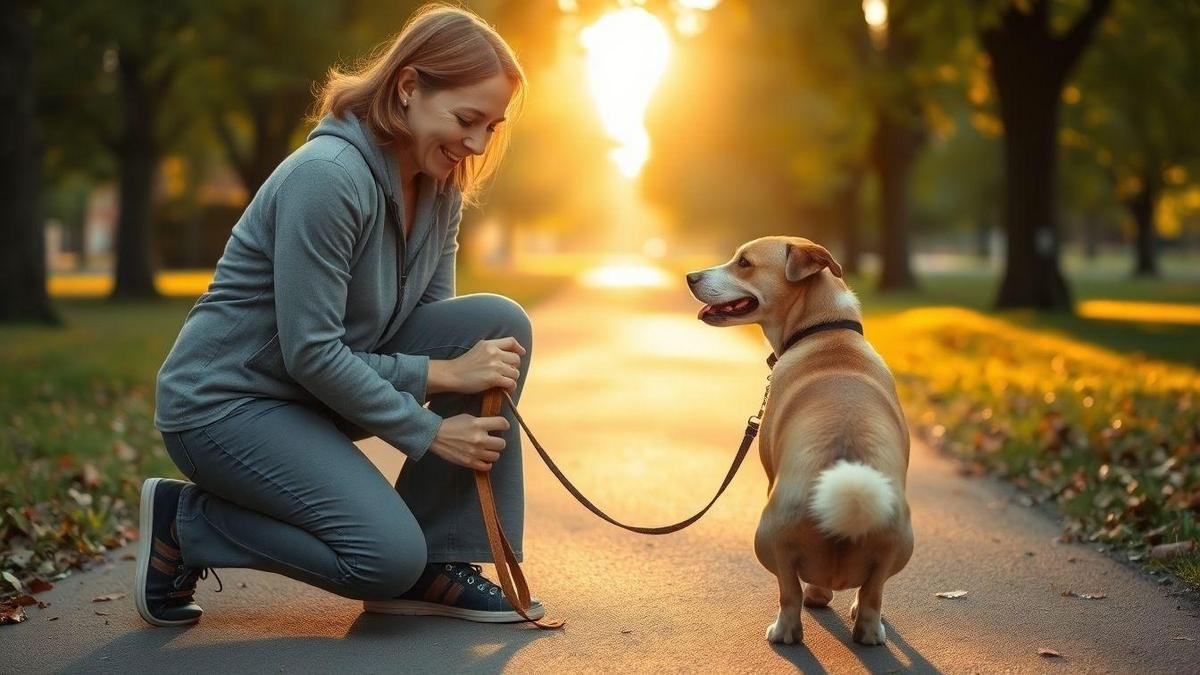
Calming techniques I use during walks to ease Sinais de estresse em cães e como aliviar o problema durante passeios
Short calming pauses & distance changes
I watch for trembling, panting, tail tucked, lip licking, yawning, or a stiff body. When I spot one, I stop calmly, speak softly, and breathe slowly. I step back to open space and keep the leash loose—this reduces pressure quickly.
| Sign | Action (pause & distance) | Why it helps |
|---|---|---|
| Panting/trembling | Stop 10–30s; move back 3–6 steps | Reduces arousal, allows recovery |
| Tail tucked/frozen | Step away; give 5–15s | Removes threat, lowers stress |
| Lip licking/yawning | Pause, turn slightly away, offer sniff | Signals safety to explore |
Using treats, redirection & praise
I carry high-value treats and use tiny bits frequently. I reward calm looks or a deep breath to link calm with reward. I redirect with cues like sit or look and offer a short training task to give the dog a job—work lowers stress. Praise is quiet and gentle. For in-home relaxation tools that reinforce calm behavior, see ideas like using a lick mat and scent enrichment.
Core rules:
- Use tiny treats for frequent reinforcement.
- Offer sniff breaks to process surroundings.
- Praise with a soft tone and gentle petting.
My three-step calm routine:
- Pause — stop, breathe, keep leash loose.
- Back up — move away 3–6 steps, open space.
- Reward & Redirect — ask for look/sit, give tiny treat, allow sniff.
Repeat until settled. Consistency smooths walks.
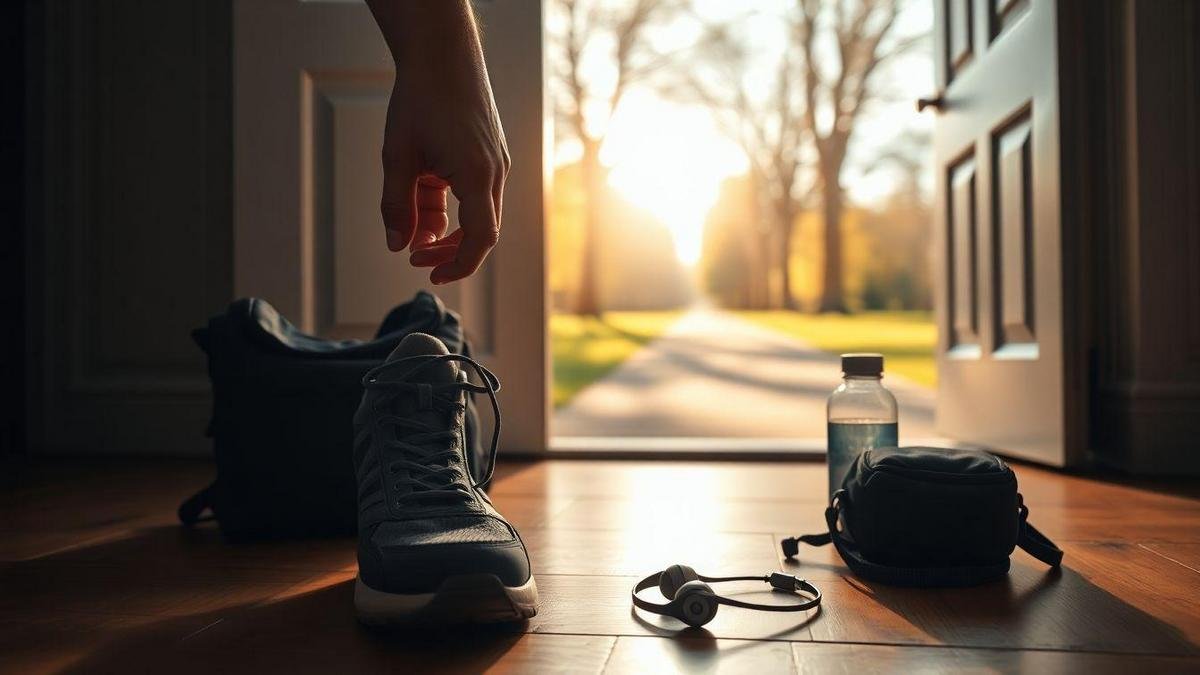
How I prepare before a walk to lower stress and prevent triggers
Health, hydration & comfort checks
I check for panting, drooling, and other early stress signs before every walk. A short routine prevents surprises.
| What I look for | Why it matters | Quick action |
|---|---|---|
| Gums (pink, dry) | Hydration & circulation | Offer water; skip long walk if dry |
| Breathing (fast/noisy) | Heat or fear | Move to shade; calm voice; end walk if worse |
| Body temp (warm ears/pads) | Heat stress risk | Cool with wet towel; find shade |
| Drooling (excessive) | Stress or nausea | Pause; check for toxins; call vet if sudden |
| Energy (sluggish vs eager) | Readiness | Shorten/delay walk if low |
I carry water, use a soft harness for even pressure, and note meds and last meal time. Small checks cut down panic and heavy panting. For at-home routines and calming corners, see how to set up a relaxation corner and build a predictable daily plan with a calm morning routine.
I study “Sinais de estresse em cães e como aliviar o problema durante passeios” to learn clear signs and faster responses. Using that guidance helped me act sooner when trouble appeared.
Picking times & routes to avoid crowds
I choose calmer routes and quieter times to reduce avoidance behaviors.
| Time | Why | Route type |
|---|---|---|
| Early morning | Fewer people/dogs | Quiet streets, parks |
| Midday (work hours) | Lower traffic in areas | Shaded paths, side streets |
| Late evening | Cooler temps in summer | Short loops near home |
If I see crowds or a loose dog, I cross the street or turn back and speak in a calm, low voice—my tone is an anchor for my dog.
My pre-walk checklist
I keep a short checklist in my pocket and run it fast:
- Water bottle — prevent dehydration
- Harness & leash — comfort & control; quick fit check
- Check for signs — scan gums, breathing, energy
- Plan route — avoid triggers; have backup path
- Phone & treats — for training and emergencies
- Weather check — shorten walk on extremes
Small habits like a cue and treats lower fear and reduce drooling tied to stress. On cold or rainy days, adapt plans using tips from coping-with-bad-weather guides.
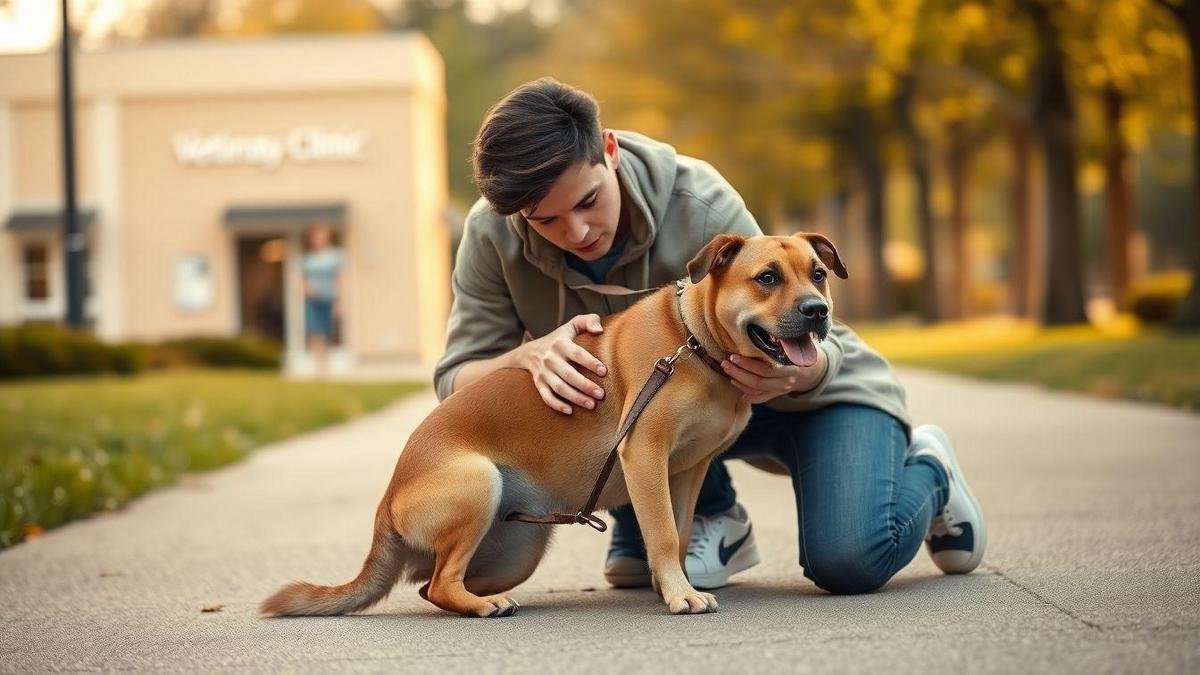
When I call a vet or trainer about persistent stress on walks
I call a professional when stress is frequent, worse, or does not improve with simple changes. If the same bad signs appear on most walks, or if I feel unsafe, I act.
Quick rules:
- If the issue lasts more than a few walks or gets stronger → call vet or trainer.
- If stress leads to injury, collapse, or severe panting → call vet now.
- If the dog is fearful of many common things and normal walks stop → call a behaviorist/trainer.
Red flags I take seriously
| Sign | What I see | Urgency |
|---|---|---|
| Shaking/trembling | Whole-body tremor across walks | High — possible pain or medical issue |
| Constant whining/whimpering | Vocalizing on leash repeatedly | Medium–High — anxiety or discomfort |
| Freezing/refusing to move | Stiff stance, wide eyes, tucked tail | High — fear or pain possible |
| Pacing/circling | Restless walking | Medium — stress building |
| Drooling, panting, shaking vomiting | Multiple signs together | Very high — call vet now |
One example: persistent shaking at truck sounds led to a vet visit and an ear infection diagnosis—treating it stopped the shaking. For serious or repeated issues, the vet’s assessment and a tailored behavior plan are often the fastest route to safe walks.
How professionals help with Sinais de estresse em cães e como aliviar o problema durante passeios
A vet rules out pain, illness, or medication needs. A trainer/behaviorist teaches calm leash skills, builds step-by-step plans, and rewards small wins. Together they help with the exact issues covered by Sinais de estresse em cães e como aliviar o problema durante passeios (route choices, gear, coping tricks).
What I share with pros:
- Dates & times of episodes
- Location/trigger (car, bench, other dog)
- Duration of shaking/whining
- Body signals (tail, ears, eyes)
- What I did (pulled, comforted, ignored)
- Food, meds, recent changes
- Short video — a quick clip shows behavior far better than memory
Bring facts, not feelings; a short video speeds diagnosis and planning.
Conclusion
Be practical and kind. Notice the first signs—panting, drooling, lip-licking, yawning, a tucked tail, or freezing—and act. Small cues tell a big story. Catching them early turns a blown fuse into a quick reset.
My go-to is repeatable: Pause, Back up, then Reward & Redirect. Short pauses and a little distance work like a calm blanket. Tiny treats and a soft cue rebuild confidence step by step.
Preparation matters: a pre-walk checklist (water, proper harness, route plan, health checks) keeps surprise triggers at bay. Jot brief notes or a phone clip when signs repeat—facts reveal patterns and help you stay ahead.
If stress is frequent or worsens, call a vet or trainer. Professionals can change the whole walk and address Sinais de estresse em cães e como aliviar o problema durante passeios with tools and plans that work.
Be patient with yourself and your dog—consistent small moves pay off. For more tips and stories, visit https://blogcraelo.com.
Frequently Asked Questions
Q: What are quick signs my dog is stressed on walks?
A: Look for tucked tail, frozen stance, ears flat, wide eyes, yawning, lip licking, or sudden pulling. Use Sinais de estresse em cães e como aliviar o problema durante passeios as a checklist and pair observations with resources on identifying and reducing pet stress.
Q: Why does my dog freeze or refuse to walk?
A: Often fear or sensory overload. Give space, avoid forcing, stay calm and patient. Work on gradual exposure and socialization like those described in socialization guides.
Q: What if my dog pants or drools a lot on walks?
A: First check temperature. If not hot, stress is likely. Slow down, offer water, and give a short break. Use quick at-home checks from the daily touch-check routine to catch early signs.
Q: How can I calm my dog quickly during a walk?
A: Lower your voice, ease leash tension, move to a quieter spot, reward small brave steps, and breathe steadily. Teach simple in-the-moment skills with methods like settle on command.
Q: When should I stop the walk or seek professional help?
A: Stop if your dog trembles, collapses, snaps, or looks injured. Call a vet for sudden issues and a trainer/behaviorist for repeated fear or severe avoidance.
Sinais de estresse em cães e como aliviar o problema durante passeios — keep this phrase in mind as a guide for spotting signs and using calm, repeatable actions to help your dog enjoy safe, stress-free walks.

